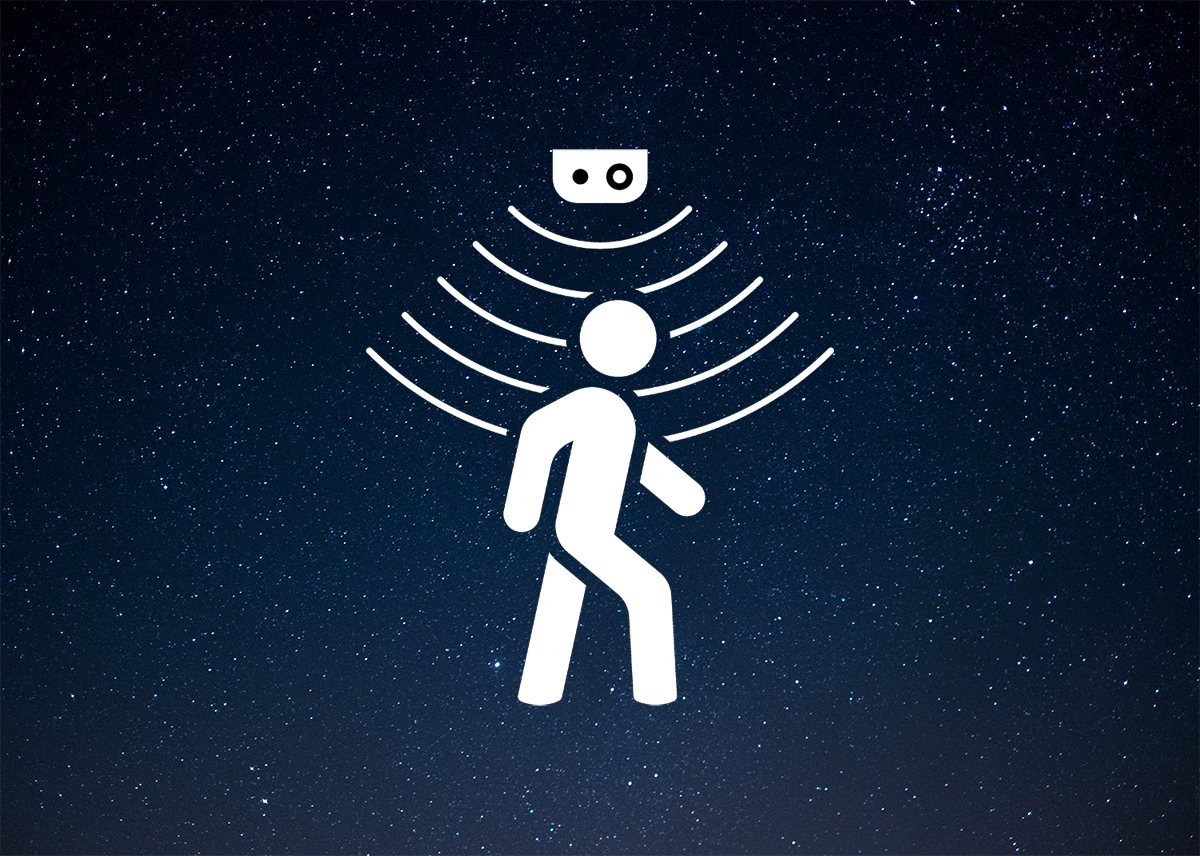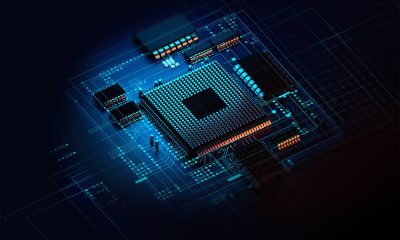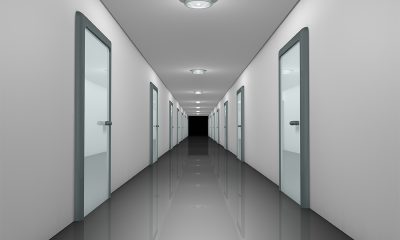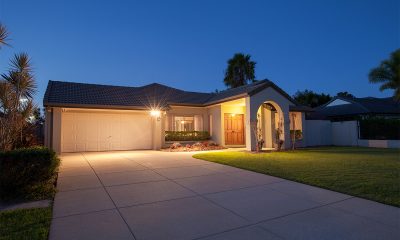What is an occupancy sensor
An occupancy sensor is a human motion/presence detecting and lighting control device that can activate the connected lighting load for a user-determined time period upon detection of motion. Automatic lighting controls are used to manage and automate the delivery of the correct amount of light at the right time. They can turn on/off or dim lights at set times or under set conditions to maximize energy savings and comply with energy efficiency codes without compromising safety or comfort.
Occupancy sensing, daylight harvesting, and time control are the most basic applications of adaptive lighting control. These technologies provide the flexibility and intelligence to adapt lighting to changing space requirements. The inclusion of automatic lighting controls makes it possible to create lighting solutions that are context sensitive, responsive to user needs, and reactive to data from beyond the boundary of local control networks. Occupancy sensors are used in both outdoor and indoor lighting applications. In addition to enabling adaptive lighting, they can contribute to nighttime security by providing motion-activated lighting as a psychological deterrent to intruder ingress.
Presence and vacancy detection
An occupancy sensor incorporates single or multiple technologies to detect human movement and presence within a defined area. When a target enters its field of view (FOV) the sensor will generate a signal indicative of that occupancy and pass it to a controller which then turns on a light or a group of lights or ramps up the load. If no human presence is detected by the sensor after a predefined period of time, the lights will be switched off or returned to a dimmed state by the controller. Every time the sensor detects an occupancy event during the first delay period it resets an internal timer. What this means is that as long as there is human presence within the detection zone, the lights will stay on until there is no further occupancy detected and the delay time has elapsed.
Occupancy sensing is about presence detection. Most occupancy sensors can be programmed to provide absence detection. When the sensor is configured to detect absence, it is called a vacancy sensor. Vacancy sensors are used to automatically turn off a manually activated light when the space is vacant. They are intended to reduce the potential for false-ON switching. Occupancy sensors, on the other side, are used to manage the whole on/off period. They provide automatic activation and often work with ambient light sensors (photosensors) to permit daylight harvesting operation or dusk-to-dawn control which prevents lights from being switched on during daylight hours.
Active vs. passive detection
The choice of a specific occupancy sensor is a function of various performance characteristics which can include detection distance, coverage, sensitivity, line of sight (LOS), nuisance alarm (false tripping) rate, mounting height, power consumption, etc. Different technologies are used for detecting occupancy. The distinction in performance characteristics between these technologies is directly or indirectly influenced by the detection mechanism they employ.
All occupancy sensors are of two types: active and passive. Active sensors emit energy of their own to detect occupancy. Examples of occupancy sensors using active technology include microwave sensors, ultrasonic sensors, video images sensors, Bluetooth sensors, and active infrared sensors. Passive sensors do not send out any energy but detect some type of energy emitted by the target of interest or sense the change caused by movement or presence of the target. A well-known application of this technology is the passive infrared (PIR) sensor. Audible sound or passive acoustic sensors are another category of passive devices which use sound recorders, microphones, hydrophones, and/or other types of acoustic transducers to “listen” for sound from people in a space.
Active sensors generally have a larger coverage, longer detection distance, higher sensitivity, and may be less affected by environmental conditions such as moving air, changes in temperature or humidity than passive sensors. This is because the transmitting power can be actively controlled and transmitting signals can be selected to be compatible with environmental conditions. Moreover, some types of active occupancy sensor can perform terrain-following detection and can even see through certain materials. The independence on line-of-sight vision affords these sensors the ability to provide uniform detection throughout the detection zone which may have irregular terrains and physical barriers. An additional advantage of non-LOS sensors is that they can be buried in the ground or contained in walls, thus the devices are hidden from plain view of an intruder and do not disturb the appearance of the environment. However, passive sensors are not without their merits. Unlike active sensors that require an external source of power (excitation voltage), passive sensors require very little power and therefore can provide a very long autonomy on battery power. This feature lends themselves to wireless sensing applications.
In real-world applications, three technologies dominate: PIR, microwave, and ultrasonic.
PIR sensor
PIR occupancy sensors detect motion by measuring changes in heat differential in the space. They are designed to be maximally sensitive to electromagnetic radiation with wavelengths in the 7 to 14 micrometer region, which is closest to the infrared radiation emitted by the human body. PIR sensors convert changes in this infrared radiation into an electrical signal using a pyroelectric module. When subjected to thermal energy flow through the sensor the pyroelectric module generates an electric charge showing up as voltage across the element electrodes. The pyroelectric module typically consists of one or more pairs of elements. Each pair of pyroelectric elements are connected in opposite polarization. The differential configuration results in better immunity from the background temperature variation, vibration, and sunlight than the single-element module which suffers from being hypersensitive to changes in environmental conditions. The pyroelectric module is housed in a package with a plastic window that allows infrared radiation. In most circumstances, the plastic window is a Fresnel lens designed with segmented parabolic mirrors that concentrate the incident infrared radiation for the pyroelectric element while expanding the field of view. It also serves as a wavelength filter to minimize false positives.
Microwave sensor
Microwave sensors are active, volumetric motion detectors that emit electromagnetic waves in the radio frequency spectrum and measure changes in frequency of waves bounced off from a moving object within the detection zone. The Doppler frequency shift between the transmitted and received signal is used to determine occupancy. There are two types of microwave sensors: monostatic and bistatic. Monostatic microwave sensors use a transceiver, which is an integrated assembly of a transmitter and receiver employing a common antenna. Radio frequency energy is pulsed from the transmitter (signal generator) and the receiver acts as the detector that looks for a change in the reflected microwave energy. In a bistatic system, the transmitter and receiver are designed as separate units located at either end of a detection zone. Each unit has its own microwave antenna. Bistatic systems can cover a larger area and are more commonly employed in exterior applications. Interior microwave sensors are almost always monostatic systems. The shape of the detection zone is defined by the radiation pattern of the antenna.
Ultrasonic sensor
Ultrasonic occupancy sensors emit high frequency sound waves into the space and detect changes in the frequency of the sound wave returning to the sensor. They are similar to microwave sensors in that they detect motion by sensing the Doppler frequency shift. Movement by a person or object within the space causes a shift in frequency due to the Doppler effect, which is interpreted by the sensor as occupancy. The ultrasonic sound energy is constantly emitted by a quartz crystal at a frequency typically in the range from 25 to 40 kHz, which is well above the audible range for humans. These active occupancy sensors are not line-of-sight dependent because sonic waves can reflect off surfaces and partitions. They are also highly volumetric as they fill the entire space with sound waves. By nature, their use is limited to indoor spaces.
Pros and cons of PIR, microwave and ultrasonic sensing
These three occupancy sensing technologies have different pros and cons associated with their use.
PIR sensors are small, rugged, inexpensive, low power, and FOV-adjustable devices with a full-body detection range of up to 40 feet and a coverage area of up to 1000 square feet. They are generally used in small, enclosed spaces to detect major motions lateral to the sensor. PIR sensors require an unobstructed line-of-sight view for detection and cannot see through obstacles such as corners and partition walls. They are less adept at adjusting to slowly changing conditions and have limited sensitivity to minor movement at distance beyond 15 feet. There are multiple variables that affect their operation. Large temperature fluctuations, direct sunlight, falling objects, vibrations, air currents, small animals or large insects moving in the FOV, condensation forming within the lens, high sound levels, and animals can all be factors that result in false triggering at the output. The coverage area and sensitivity of a PIR sensor is largely dependent on the lens pattern.
Microwave sensors have greater coverage and sensitivity. Monostatic microwave sensors operate effectively at a distance between 30 and 100 feet. They are suited to detection in long, flat, and narrow zones. Bistatic systems provide a detection distance of up to 328 feet. Microwave sensors are hypersensitive to moving objects and detects extremely small movements. Microwave sensors tolerate harsh environmental conditions and most weather conditions (temperature changes, humidity, noise, air, dust) without producing nuisance alarms. They may be stacked to increase the height of the detection zone. High frequency radio waves can penetrate most types of surfaces such as glass, wood, and plastic. However, this is limited to non-metallic materials. Nuisance alarms from microwave sensors may be triggered by fans, plastic drainpipe, rodents, and pets. Microwave sensors will not perform as expected in extremely heavy fog or in a wet, heavy snow.
Ultrasonic sensors are best suited to detecting occupancy in confined spaces such as offices, warehouses, garages, conference rooms. They have a nominal limit of about 40 feet for full-body detection and can detect minor motion up to 20 feet away. The coverage area of an ultrasonic sensor ranges from about 300 to 2000 square feet. A direct line of sight is not required with ultrasonic detection. This advantage permits the use of ultrasonic sensors in odd-shaped rooms. However, there’re also weaknesses limiting the uses of ultrasonic sensors. Ultrasonic sensors may experience false triggering due to heavy airflow, vibrations, on-off cycling of an HVAC system, and high ceilings. The FOV cannot be adjusted by user.
What is a dual-technology sensor
Dual-technology occupancy sensors use two technologies to reduce nuisance alarms. This sensor type attempts to achieve the highest accuracy of detection possible in applications where false triggering is much likely with single-technology detection. A dual-tech occupancy sensor combines two different and complementary types of sensors in one unit. The two sensors are normally connected to operate with an “AND” gate logic. The lighting load is activated only when both technologies detect the presence of occupants within a predetermined time interval, but only one of the sensors needs to continually monitor the occupancy and hold the lights on throughout the period of occupancy. While the simultaneous use of two types of sensors can significantly reduce the number of false alarms, it comes at a price. Dual-tech activation makes the sensor unit less sensitive to valid occupancy events, which does not lend this sensor type to use in mission critical facilities requiring high levels of traffic control. PIR sensors are considered to be complementary to most other types of occupancy sensors. A dual-technology sensor is usually a combination of a PIR sensor with a monostatic microwave sensor, an ultrasonic sensor, or a microphonic sensor.
System design
An occupancy sensor is a functionally independent system that integrates the sensing element, electronic circuitry, and, in some types of products, battery power and associated power management IC into a single assembly. The electronic circuitry may use an amplifier and filter to magnify signal signature and minimize background noise. In a microwave sensor automatic gain control (AGC) circuitry is used to compensate for very slow changes in signal caused by environmental conditions. A comparator circuit compares the amplified sensor output to fixed reference thresholds to determine whether it constitutes an occupancy event. Upon detection of an occupancy event, the voltage output is either used as an input to a directly interfaced LED driver with integrated control circuitry or is converted from analog to digital by an analog-to-digital converter (ADC) locally or externally. The digital signal will be fed to a microcontroller (MCU) or digital signal processors (DSP) which orchestrates a zone control or provides embedded intelligence for an intelligent luminaire. In the former case, the occupancy sensor is luminaire-integrated.
Occupancy sensors are normally designed to turn lights on or off. Some luminaire-integrated sensors provide bi-level lighting control in corridors or stairwells by dimming the light output to a lower level during the hours of vacancy. In the latter case, the occupancy sensor is usually a self-contained system and incorporates communication functionality to support networked lighting control systems. It can transmit and receive digital control signals through a DALI control network or by implementing a wireless communication protocol.
Internet of Things (IoT)
The growing reach of the Internet of Things (IoT) is driving a growing demand for IoT sensors. An IoT sensor is an embedded system that works at the physical layer of an IoT network. The physical layer, also known as the perception layer, senses and gathers information about the physical environment. In all IoT applications, IoT sensors must be able to communicate with a cloud-hosted IoT platform so the information they collect can be aggregated and processed. They are often required to communicate with each other, collaborate among themselves and with smart lights, and collectively implement control strategies that may involve the participation of heterogeneous networks, systems and devices.
To transform an occupancy sensor into an IoT device, the built-in communication module must be able to support a digital protocol that guarantees interoperability in IoT networks. Typically, a radio transceiver is installed into the sensor assembly to support wireless RF communication. The communication protocol running over the radio transceiver is most commonly a device-to-device (D2D) technology which allows multiple devices to perform coordinated actions and provides Internet connectivity through the use of IoT gateways.
















Loading...